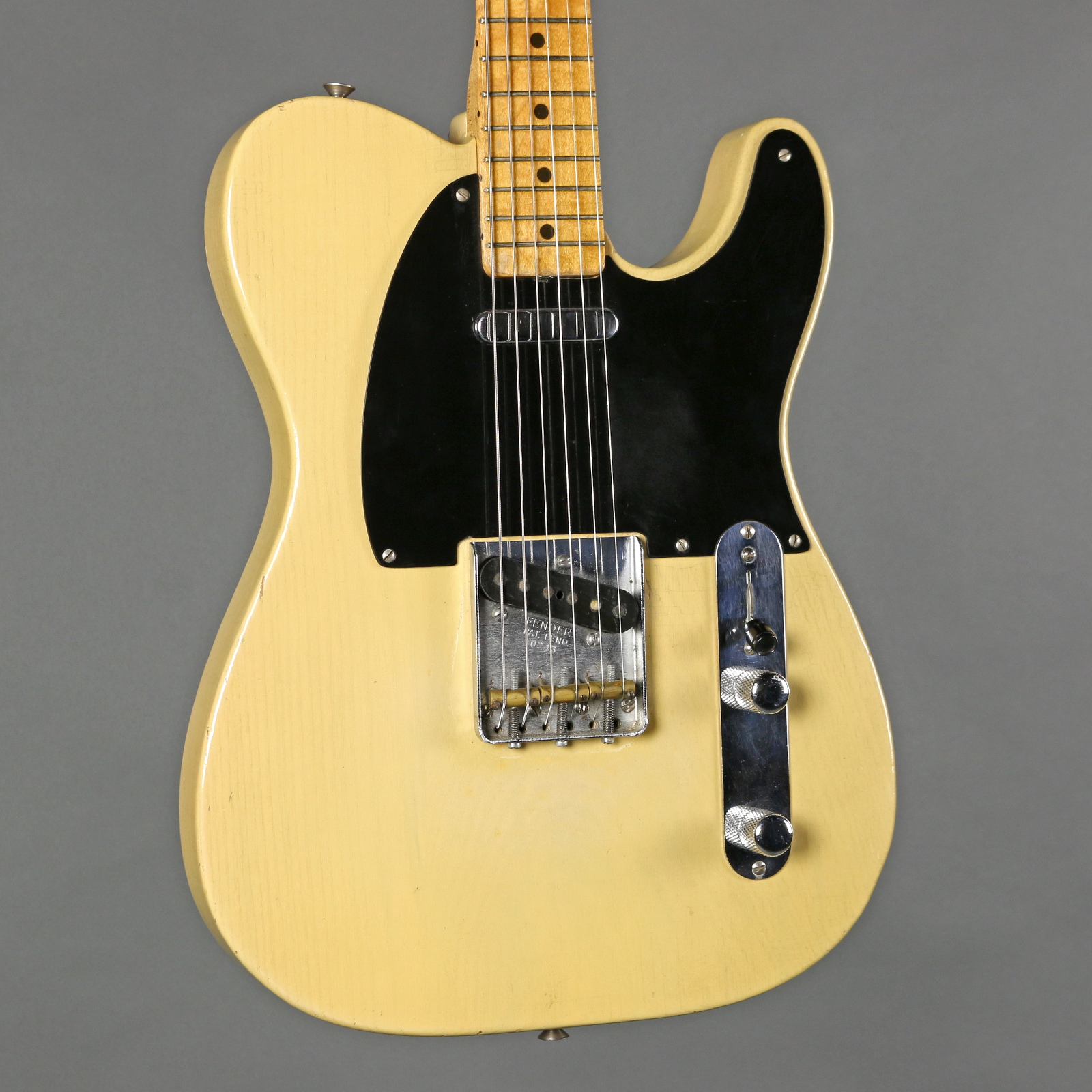Despite the already growing popularity of the instrument, guitarists and guitar manufacturers knew that there were still core issues that needed to be resolved in order to maximize the guitar’s potential. First, the style of guitar that was being electrified during this time period was simply too expensive to afford for a large portion of Americans, and second, the acoustic nature of these guitars restricted the overall quality and customizability of the amplified sound. In 1950, however, Leo Fender released the Fender Telecaster, a solid-body electric guitar, after years of development.

The Telecaster was, and remains today, essentially a maple fretboard bolted onto an ash or alder slab of wood that had been shaped into the guitar body. Revolutionarily simple at the time, it eliminated acoustic sound in favor of a two pickup configuration that required amplification. Kevin Harding explains that “When the solid-body was introduced around 1950, it was affordable, indestructible, and way more LOUD! And it looked super modern and cool…It became the out-front instrument of every band, and every kid wanted one.” The Telecaster’s popularity quickly began to rise in the country-western scene, along with new, affordable electrified acoustic guitars made by the American guitar manufacturer Gretsch.
In the early 1950s, black-dominated blues music and white-dominated country music were on a collision course, largely due to the influence of the electric guitar, that would eventually lead to the rock and roll revolution. With the rising popularity of acts like Muddy Waters, Chet Atkins, and Chuck Berry, the guitar’s rise absolutely exploded. Chuck Berry’s smash hit “Maybelline”, one of the songs that began the genre’s rise, was essentially a cover of a traditional country song that had been reworked into a rockabilly track with a heavy influence from blues. Then, as Waksman states, “Berry’s ‘Johnny B. Goode’ founded a new American narrative that cast the electric guitar and rock and roll as means of upward mobility for working-class youth” (Waksman, 238).
This era led the guitar to a transcendent level of popularity, and greatly contributed to the rise of the “guitar hero” archetype that would define the following decades in popular music. The guitar was to become the face of the music genre which would become the dominant force in the industry for the remainder of the century.